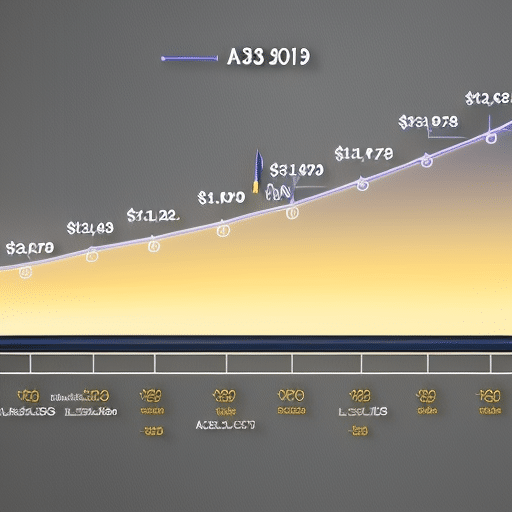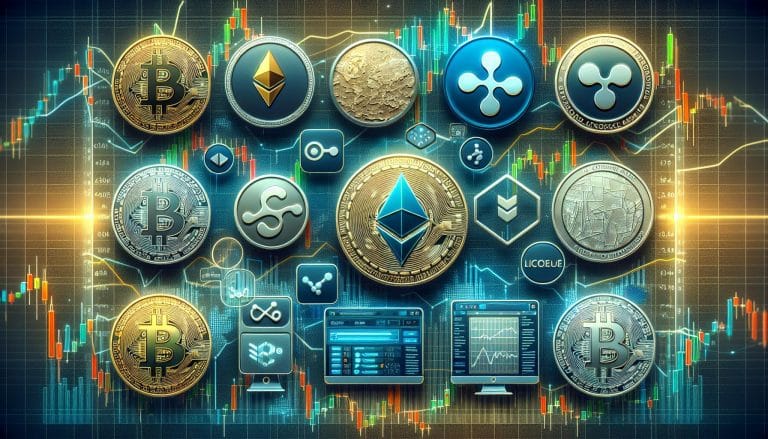Xrp Fundamental Analysis
XRP is one of the top cryptocurrencies on the market today. If you’re looking to invest in a cryptocurrency, you’ll want to get a better understanding of the fundamentals of it.
This article will give you a better understanding of XRP, including its history, technology, and market conditions. We’ll also discuss the pros and cons of investing in XRP so you can make an informed decision.
So let’s dive in and start taking a look at XRP’s fundamentals.
History of XRP
XRP has been around since 2012, making it one of the oldest and most established cryptocurrencies in the world! Developed by Ripple Labs, this cryptocurrency was created to make international payments and cross-border transactions easier, faster, and more secure.
XRP has seen a lot of success since its launch, and it’s now the third-largest cryptocurrency by market cap. Due to its low transaction fees, fast transaction times, and scalability, it has become a popular choice for financial institutions and banks.
It’s used by banks to facilitate their international payments, and the Ripple protocol allows for instant settlements in any currency, making it a great option for international payments. XRP is also widely used for remittances, allowing people to transfer money quickly and securely.
Technology behind XRP
You may be wondering how XRP works, so let’s take a closer look at the technology behind it. XRP is a digital asset built on the open-source Ripple Consensus Ledger (RCL). The RCL is a distributed ledger technology (DLT) that was created to enable payments and other transactions to be settled in real time.
The technology utilizes a consensus algorithm to validate transactions, allowing for near-instantaneous and secure payment transfers. The Ripple Consensus Ledger also utilizes XRP as a native currency for transaction fees. This helps to ensure that the network is secure and that transactions are secure and cost-effective.
In addition, XRP is used by various financial institutions as a bridge currency, allowing for the transfer of funds between different currencies. All of this makes XRP an efficient and secure technology for digital payments.
XRP Market Conditions
With the constantly fluctuating market conditions, it’s essential to stay informed on the current state of XRP to help make informed trading decisions. Currently, XRP is trading at a fairly stable price, with a slight downward trend.
This could be attributed to the fact that the majority of XRP holders are long-term investors, and they’re less likely to react to short-term market fluctuations. Additionally, the emergence of institutional investors has helped to keep XRP’s price stable over the long-term.
On the other hand, XRP’s liquidity has decreased slightly over the past few months, which may be a sign of a bearish market. However, this decrease in liquidity could also be attributed to the increased regulation of crypto assets by governments around the world.
Overall, XRP is in a relatively strong market position, with the potential for significant growth in the near future.
Pros of Investing in XRP
Investing in XRP can be a lucrative decision for those looking to make a lasting impact on their financial future. XRP offers a number of advantages that other digital assets do not. It provides faster and cheaper transactions that are more reliable than other cryptocurrencies. XRP is also more resilient to volatile market conditions compared to other digital assets, which makes it a relatively safer investment choice.
Additionally, XRP has a highly advanced infrastructure and is backed by a number of Fortune 500 companies. This makes it an attractive investment for those who are looking for a long-term investment with a stable return. Furthermore, XRP is widely accepted by a variety of exchanges, allowing investors to quickly and easily buy and sell their XRP holdings.
All of these factors make investing in XRP an attractive proposition for those looking to diversify their portfolio.
Cons of Investing in XRP
Although investing in XRP can be lucrative, there are some potential drawbacks to consider before making a purchase.
One issue is the volatility of the cryptocurrency. The price of XRP can fluctuate significantly, meaning that investments can become quite risky.
In addition, the lack of widespread adoption is another problem. XRP hasn’t yet been adopted by a large number of businesses, meaning that the potential for growth is limited.
Furthermore, XRP isn’t a widely accepted currency, and it isn’t backed by any government or central bank. This makes it difficult to use in everyday transactions and could limit its potential.
Finally, XRP isn’t available through all exchanges, meaning that there are limited options for buying and selling.
Conclusion
Investing in XRP can be a profitable venture, but there are some things you should know first. XRP has a long history and uses secure technology, making it resilient to market conditions. However, it can also be volatile and therefore should be considered a riskier investment.
Ultimately, it’s up to you to decide if XRP is right for your portfolio. Do your research, understand the risks, and make an informed decision.
With the right approach, XRP could be a great addition to your financial portfolio.







 Bitcoin
Bitcoin  Ethereum
Ethereum  Tether
Tether  XRP
XRP  USDC
USDC  Lido Staked Ether
Lido Staked Ether  TRON
TRON  Dogecoin
Dogecoin  Cardano
Cardano  Figure Heloc
Figure Heloc  Bitcoin Cash
Bitcoin Cash  Wrapped stETH
Wrapped stETH  WhiteBIT Coin
WhiteBIT Coin  Wrapped Bitcoin
Wrapped Bitcoin  Wrapped eETH
Wrapped eETH  Chainlink
Chainlink  USDS
USDS  Binance Bridged USDT (BNB Smart Chain)
Binance Bridged USDT (BNB Smart Chain)  LEO Token
LEO Token  WETH
WETH  Zcash
Zcash  Monero
Monero  Stellar
Stellar  Coinbase Wrapped BTC
Coinbase Wrapped BTC  Sui
Sui  Litecoin
Litecoin  Hyperliquid
Hyperliquid  Ethena USDe
Ethena USDe  Avalanche
Avalanche  Canton
Canton  Shiba Inu
Shiba Inu  Hedera
Hedera  World Liberty Financial
World Liberty Financial  Toncoin
Toncoin  sUSDS
sUSDS  USDT0
USDT0  Dai
Dai  Cronos
Cronos  Uniswap
Uniswap  Polkadot
Polkadot  PayPal USD
PayPal USD  Ethena Staked USDe
Ethena Staked USDe  Mantle
Mantle  USD1
USD1  Pepe
Pepe  Rain
Rain  MemeCore
MemeCore  Aave
Aave